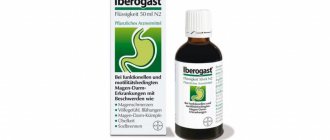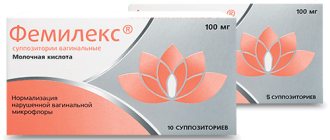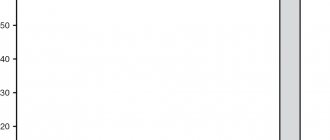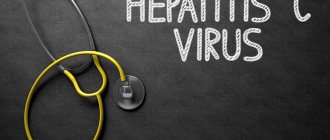Compound
Active ingredients per sachet: paracetamol (acetaminophen) 160 mg, ascorbic acid 50 mg, chlorpheniramine maleate 1 mg. Excipients : citric acid 50 mg, Red charming dye 0.05 mg, raspberry flavor 100 mg, colloidal silicon dioxide (syloid) 4 mg, silicon dioxide 20 mg, sodium citrate dihydrate 2 mg, corn starch 1 mg, powdered sugar 2794, 95 mg, sucrose 8800 mg, titanium dioxide 1 mg, calcium phosphate 1 mg.
Contraindications
Hypersensitivity to individual components of the drug, severe dysfunction of the liver (Child-Pugh > 9) and kidneys, sucrase/isomaltase deficiency, fructose intolerance, glucose-galactose malabsorption, children under 2 years of age. When combined with monoamine oxidase inhibitors (MAOIs). MAO inhibitors should not be used in combination with antihistamines due to potential side effects on the central nervous system. These effects may prolong and exacerbate the anticholinergic effects of antihistamines.
Carefully
Arterial hypertension, severe cardiovascular diseases, moderate liver and kidney dysfunction, diabetes mellitus, glaucoma, bronchial asthma, chronic obstructive pulmonary disease, thyrotoxicosis, pheochromocytoma, difficulty urinating with prostate adenoma, blood diseases, congenital hyperbilirubinemia (Gilbert, Dubin syndromes) -Johnson and Rother), hyperoxalaturia, glucose-6-phosphate dehydrogenase deficiency, epilepsy, pyloroduodenal obstruction, alcoholism. If you have such conditions, you should consult your doctor before use.
Directions for use and doses
Inside. A single dose for children 2-5 years old is the contents of 1 sachet, for children 6-12 years old - the contents of 2 sachets. Take orally, regardless of food intake, after dissolving in 100-200 ml of warm water (not boiling). If necessary, repeat the dose every 4-6 hours, but no more than 4 sachets per day. If the temperature does not decrease, the pain, chills, and runny nose do not stop, be sure to consult a doctor. The drug should not be taken for more than 3 days without consulting a doctor. Further therapy is possible after consultation with a specialist.
Note!
Description of the drug Antiflu Kids por. d/oral. solution package No. 5 on this page is a simplified author’s version of the apteka911 website, created on the basis of the instructions for use.
Before purchasing or using the drug, you should consult your doctor and read the manufacturer's original instructions (attached to each package of the drug). Information about the drug is provided for informational purposes only and should not be used as a guide to self-medication. Only a doctor can decide to prescribe the drug, as well as determine the dose and methods of its use.
Side effect
Allergic reactions: skin rash, itching, urticaria, toxic epidermal necrolysis (Lyell's syndrome), polymorphobullous erythema (Stevens-Johnson syndrome), acute generalized exanthematous pustulosis, angioedema (Quincke's edema), anaphylactic shock. From the central nervous system: dizziness, sleep disturbance (drowsiness), headache, excitability, decreased speed of psychomotor reactions, fatigue, disorientation, anxiety, convulsions, movement disorder, confusion, coma. From the hematopoietic system: anemia, thrombocytopenia, thrombocytopenic purpura, leukopenia, pancytopenia, agranulocytosis, hemolytic anemia, methemoglobinemia. From the digestive system: nausea, vomiting, stomach discomfort, abdominal pain, diarrhea, dry mouth, loss of appetite Disorders from the liver and biliary tract: liver damage (increased activity of “liver” enzymes), hepatitis, as well as dose-dependent liver failure, liver necrosis. Long-term unjustified use can lead to liver fibrosis and liver cirrhosis. From the urinary system: urinary retention, with long-term use of high doses nephrotoxic effect. Respiratory disorders: bronchospasm or exacerbation of bronchial asthma, including in patients sensitive to acetylsalicylic acid or other NSAIDs. Endocrine system disorders: hypoglycemia. Cardiovascular system disorders: tachycardia, increased blood pressure, arrhythmia, angina pectoris. Visual disturbances: visual disturbances, accommodation disturbances, dry eyes, dilated pupils; increased intraocular pressure.
Instructions Fluvir for children
ARVI (acute respiratory viral infections), including influenza , are the most common colds in the winter. ARVI and influenza are caused by viruses, not bacteria; the latter is a misconception. The onset of illness is the best time for the immune system to show what it is capable of. If the body’s defense system is strong, it will overcome the virus, but if not, then inflammation will occur, which can spread to the bronchi and other organs. Complications of ARVI and influenza include pneumonia, bronchitis, sinusitis, and otitis media. Also, viral infections awaken “silent” foci of chronic infection, which can appear during this period.
Children get sick with acute respiratory viral infections and influenza more often than adults, because they have an incompletely developed immune system, little “experience” of diseases and limited acquired immunity. For frequently ill children, preventive measures and strengthening the immune system are very important before the cold season, before joining new groups (kindergarten, school), as well as during climate changes during travel and vacations.
There are a large number of viruses that cause colds, and they are constantly changing in order to be elusive to the immunity that has formed in the body since past illnesses. Therefore, in a family, adults and children can constantly become infected with new viruses, and the cold goes around in circles. Therefore, it is important to strengthen the immune system in general, and not just take measures to acquire immunity to specific viruses or bacteria (vaccinations, etc.).
Considering the causes of ARVI and influenza, it is very important to strengthen the immune system and destroy viruses in order to avoid complications and recover faster.
Fluvir® for children is a symbiotic containing five probiotic bacteria Lactobacillus plantarum LP01 and LP02, Lactobacillus rhamnosus LR04 and LR05, Bifidobacterium lactic BS01 and a prebiotic - fructooligosaccharides.
Composition : 1 sachet contains 1.25 × 10⁹ CFU of viable bacteria Lactobacillus plantarum LP01; 1.25 × 10⁹ CFU of viable bacteria Lactobacillus plantarum LP02; 1.25 × 10⁹ CFU of viable bacteria Lactobacillus rhamnosus LR04; 1.25 × 10⁹ CFU of viable bacteria Lactobacillus rhamnosus LR05; 2.5 × 10⁹ CFU of viable bacteria Bifidobacterium lactic BS01; excipients: fructooligosaccharides, fructose, natural extracts of raspberries, carthamus, black carrot anthocyanidins, potato maltodextrin, insoluble fiber, silicon dioxide (E 551), citric acid (E 330). Without GMO.
Nutritional (nutritional) and energy value (calorie content) of the product : proteins – 0.74 g (g) per 100 g (g), 26 mg (mg) per 1 sachet, fats – 0.8 g (g) per 100 g ( d), 28 mg (mg) per 1 sachet, carbohydrates – 86.0 g (g) per 100 g (g), 3.005 g (g) per 1 sachet. Energy value (calorie content) – 1483 kj (kJ)/354 kcal (kcal) per 100 g (g), 52.0 kj (kJ)/12.4 kcal (kcal) per 1 sachet.
In order to protect against the harmful effects of the stomach environment and to maintain maximum viability, probiotic strains of microorganisms are enveloped in a matrix of fructooligosaccharides using a unique technology - microencapsulation.
Fluvir® for children , due to the activity of the probiotic strains included in its composition, has an immunomodulatory effect on the lymphoid tissue of the intestinal mucosa, which contains about 70% of the immunocompetent cells of the human body. This property contributes to an increase in immune bodies and mediators of the immune response - interleukins and immunoglobulins of the IgA class (so-called secretory). An increase in the number of immune cells due to the systemic action of Fluvir® for children also occurs in the mucous membranes of the lungs, bronchi and nasopharynx.
Lactobacilli Lactobacillus plantarum LP01 and LP02, Lactobacillus rhamnosus LR04 and LR05 promote the breakdown of carbohydrates in the intestinal lumen with the formation of lactic acid. The acidic environment created in this way has a positive effect on the development of the body’s own bifidobacteria, which make up 85-95% of the intestinal microflora of adults and children.
Lactobacilli Lactobacillus plantarum LP01 and LP02, Lactobacillus rhamnosus LR04 and LR05 and Bifidobacterium lactic BS01:
1. They exhibit immunomodulatory properties: they enhance the specific IgA response and reduce the production of cytokines associated with inflammation; synthesize amino acids, pantothenic acid, vitamin K and B vitamins; promote the absorption of iron, calcium, vitamin D.
2. They exhibit symbiosis, compensating each other’s metabolism, and stimulate mutual growth; have high antagonistic activity against a wide range of pathogenic and conditionally pathogenic microorganisms, suppress the vital activity of staphylococci, shigella, rotaviruses, Proteus, enteropathogenic Escherichia coli, some yeast-like fungi, and prevent their adhesion to the intestinal mucosa.
3. Create favorable conditions for the development of beneficial intestinal microflora, maintain and regulate the physiological balance of intestinal microflora, and contribute to the normalization of the microbiocenosis of the gastrointestinal tract.
Fructooligosaccharides are a nutritious substrate for beneficial intestinal microflora and contribute to its active development, which prevents dysbiosis and antibiotic-associated diarrhea.
Recommendations for consumption : used as a dietary supplement to the diet of children aged two months and older and adults, as an additional source of viable lactic acid bacteria Lactobacillus and Bifidobacterium in order to normalize the intestinal microflora and improve its functional state and general resistance of the body, common in winter viral and bacterial infections of the upper respiratory tract, to prevent dysbiosis and antibiotic-associated diarrhea during and after taking antibiotics, as well as food allergies. The best food for infants is mother's milk.
According to the study of the effectiveness and safety of Fluvir ® for children in the prevention of acute respiratory viral infections and influenza (double-blind placebo-controlled clinical trial “A new chance for the prevention of diseases in winter by prescribing a symbiotic”, 2003-2007 Fabrizio Pregliasco, MD, Giovanni Anselmi, Bac , Luigi Fonte, MD, Francesca Giussani, MD, Stefano Schieppati, MD, and Lidia Soletti, MD), when taking Fluvir ® for children:
• the incidence of influenza has decreased by 5 times
• the incidence of ARVI and complications of respiratory diseases decreased by 1.5 times
• the duration of the disease decreased by 25%
• the nature of symptoms has changed towards lighter and milder ones.
Efficacy was assessed from the 15th day of taking Fluvir ® for children, since this is exactly the time required to increase immunity to the required level.
Unless your doctor tells you otherwise, follow these recommendations.
Directions for use and recommended daily dose : dissolve the contents of one sachet in 50-100 ml of breast milk or formula, or boiled drinking water cooled to room temperature. For children aged two months and older and adults, take 1-2 sachets per day in the morning before meals. Do not add to hot food! Do not exceed the recommended daily dose.
Consumption rate : 1 month. Consultation with a physician is recommended before starting to use a dietary supplement and when used concomitantly with any medications.
Features of use : for maximum effectiveness, the interval between taking the dietary supplement and antibiotics should be 3 hours. Should not be used as a substitute for a complete diet.
Contraindications : individual hypersensitivity to the components of the product.
Not a medicine. Dietary supplement Fluvir® kids/Fluvir® for children.
Shelf life : 2 years.
Storage conditions : store in original packaging at a temperature not exceeding 25 ° C in a dry place, protected from light and out of reach of children.
Release form : powder weighing 3.5 g (g) in sachets, packed in a cardboard box.
Manufacturer : Probiotical SpA/Probiotical S.P.A., Via Mattei 3, Novara 28100, Italy for Delta Medical Promotions AG / Delta Medical Promotions AG, Otenbachgasse 26 Zurich, CH-8001, Switzerland, www.deltaswiss.eu.
Importer : Delta Medikel LLC, 08132, Ukraine, Vishnevoe, st. Chernovola, 43, tel.: +38.
Delta Medical Promotions AG
Representative
Representative office of Delta Medical Promotions AG, 08132, Ukraine, Vishnevoe, st. Chernovola, 43, tel.: +38.
Overdose
In case of overdose, you should immediately seek medical help. Paracetamol Symptoms: diarrhea, loss of appetite, nausea and vomiting, abdominal discomfort and/or abdominal pain, increased sweating. The clinical picture of an acute overdose of paracetamol develops within 6-14 hours after taking paracetamol. Symptoms of chronic overdose appear 2-4 days after increasing the dose of the drug. In cases of severe poisoning, severe liver failure may occur, including hepatic encephalopathy, coma and death. Hypokalemia and metabolic acidosis (including lactic acidosis) can also develop in conditions of acute and/or chronic overdose. Frequent clinical manifestations after 3-5 days are jaundice, fever, hepatic breath, hemorrhagic diathesis, hypoglycemia, and liver failure. Acute renal failure with acute tubular necrosis, which is diagnosed by severe pain in the lumbar region, hematuria and proteinuria, can develop without severe impairment of liver function. Treatment: gastric lavage, activated carbon in the first 6 hours, administration of SH-group donors and precursors for the synthesis of glutathione - methionine 8-9 hours after an overdose and N-acetylcysteine after 12 hours.
Chlorpheniramine Symptoms: dizziness, agitation, sleep disturbances, depression, seizures and coma. Treatment: symptomatic.
Ascorbic acid High doses of ascorbic acid (more than 3000 mg) can cause temporary osmotic diarrhea and gastrointestinal disturbances, such as nausea and stomach discomfort. Treatment: symptomatic, forced diuresis.
Antiflu Kids por d/ra vn approx 12 g x5
Trade name: AntiFlu Kids International name: Paracetamol+Chlorphenamine+Ascorbic acid
Release form: powder for the preparation of solution for oral administration (laminated aluminum foil bags) 12 g
Ingredients: ascorbic acid 50 mg, paracetamol 160 mg, chlorphenamine maleate 1 mg
Pharmacological group: acute respiratory infections and “cold” symptoms remedy (analgesic non-narcotic drug + H1-histamine blocker + vitamin)
Pharmacological group according to ATK: N02BE51 (Paracetamol in combination with other drugs (excluding psychotropic drugs))
Pharmacological action: H1-histamine-blocking, antihistamine, vitamin, antipyretic, sedative, cold and flu, eliminating symptoms, analgesic,
Indications: Flu, ARVI, acute rhinitis - symptomatic treatment.
Directions for use and dosage:
A single dose for children 2-5 years old is 1 sachet, for children 6-12 years old - 2 sachets. Take orally, regardless of meals, after dissolving the contents of the package in 150 ml of warm water.
Special instructions:
If necessary, repeat the dose every 4-6 hours, but no more than 3 doses per day. The total duration of treatment should not exceed 5 days. Further use is possible only under medical supervision.
Contraindications:
Increased individual sensitivity to the components of the drug, severe impairment of liver and/or kidney function.
Drug interactions: It is not recommended to take simultaneously with sleeping pills, sedatives and drugs containing alcohol.
Release form: Powders, 5 pcs. in cardboard packaging.
Side effects: In isolated cases, the following occur: From the central nervous system: headache, feeling of fatigue. From the gastrointestinal tract: nausea, epigastric pain. From the endocrine system: hypoglycemia (up to the development of coma). From the hematopoietic organs: anemia, hemolytic anemia (especially for patients with glucose-6-phosphate dehydrogenase deficiency), extremely rarely - thrombocytopenia. Allergic reactions: anaphylactoid reactions (including anaphylactic shock). From the skin: itching, rash on the skin and mucous membranes (usually erythematous, urticaria), angioedema, exudative erythema multiforme (including Stevens-Johnson syndrome), toxic epidermal necrolysis (Lyell's syndrome). Other: hypervitaminosis, metabolic disorders, feeling of heat, drowsiness.
Overdose. Paracetamol. Symptoms: diarrhea, loss of appetite, nausea and vomiting, abdominal discomfort and/or abdominal pain, increased sweating. The clinical picture of an acute overdose of paracetamol develops within 6-14 hours after taking paracetamol. Symptoms of chronic overdose appear 2-4 days after increasing the dose of the drug.
Chlorphenamine. Symptoms: dizziness, agitation, sleep disturbances, depression, seizures and coma. Treatment: symptomatic.
Pharmacodynamics: Combined drug. Paracetamol has an analgesic and antipyretic effect. Chlorphenamine (H1-histamine receptor blocker) has an antiallergic effect and reduces swelling of the mucous membrane of the upper respiratory tract. Ascorbic acid normalizes capillary permeability, has an antioxidant effect, and helps increase the body's resistance.
Interaction: Increases the concentration of benzylpenicillin and tetracyclines in the blood. Improves the absorption of iron preparations in the intestines (converts ferric iron to divalent iron), can increase the excretion of iron when used simultaneously with deferoxamine. Increases the risk of developing crystalluria during treatment with salicylates and short-acting sulfonamides, slows down the excretion of acids by the kidneys, increases the excretion of drugs that have an alkaline reaction (including alkaloids), and reduces the concentration of oral contraceptives in the blood. Increases overall ethanol clearance. When used simultaneously, it reduces the chronotropic effect of isoprenaline. Reduces the therapeutic effect of antipsychotic drugs (neuroleptics) - phenothiazine derivatives, tubular resorption of amphetamine and tricyclic antidepressants. Reduces the effectiveness of uricosuric drugs. It can either increase or decrease the effect of anticoagulant drugs. Inducers of microsomal oxidation in the liver (phenytoin, ethanol, barbiturates, rifampicin, phenylbutazone, tricyclic antidepressants) increase the production of hydroxylated active metabolites of paracetamol, which makes it possible to develop severe hepatotoxic reactions even with a small overdose. Inhibitors of microsomal oxidation (including cimetidine) reduce the risk of hepatotoxic action of paracetamol. Diflunisal increases the plasma concentration of paracetamol by 50% and increases hepatotoxicity. Ethanol reduces the concentration of ascorbic acid in the body and also contributes to the development of acute pancreatitis. The use of barbiturates reduces the effectiveness of paracetamol and increases the excretion of ascorbic acid in the urine. Strengthens the effect of sleeping pills.
Dispensed from pharmacies: Dispensed without a prescription.
Drug registration number: LS-000415
Date of registration (re-registration) of the drug: 07/01/2005
Interaction with other drugs
It is not recommended to take simultaneously with sleeping pills, sedatives and drugs containing alcohol. Increases the concentration of benzylpenicillin and tetracyclines in the blood. Improves the absorption of iron preparations in the intestines (converts ferric iron to divalent iron); may increase iron excretion when used concomitantly with deferoxamine. Increases the risk of developing crystalluria during treatment with salicylates and short-acting sulfonamides, slows down the excretion of acids by the kidneys, increases the excretion of drugs that have an alkaline reaction (including alkaloids), and reduces the concentration of oral contraceptives in the blood. Increases overall ethanol clearance. When used simultaneously, it reduces the chronotropic effect of isoprenaline. Reduces the therapeutic effect of antipsychotic drugs (neuroleptics) - phenothiazine derivatives, tubular reabsorption of amphetamine and tricyclic antidepressants. Reduces the effectiveness of uricosuric drugs. It can either increase or decrease the effect of anticoagulant drugs. Paracetamol (or its metabolites) interacts with enzymes involved in vitamin K-dependent clotting factor synthesis. Interactions between paracetamol and warfarin or coumarin derivatives may result in an increase in the international normalized ratio (INR) and an increased risk of bleeding. Patients taking oral anticoagulants should not take paracetamol for long periods of time without medical supervision. Ethanol enhances the sedative effect of chlorphenamine. Antidepressants, antiparkinsonian and phenothiazine antipsychotic drugs increase the risk of side effects (urinary retention, dry mouth, constipation). Glucocorticosteroids increase the risk of developing glaucoma. Inducers of microsomal oxidation in the liver (phenytoin, ethanol, barbiturates, rifampicin, phenylbutazone, tricyclic antidepressants) increase the production of hydroxylated active metabolites of paracetamol, which makes it possible to develop severe hepatotoxic reactions even with a small overdose. Inhibitors of microsomal oxidation (including cimetidine) reduce the risk of hepatotoxic action of paracetamol. Diflunisal increases the plasma concentration of paracetamol by 50% and increases hepatotoxicity. Ethanol reduces the concentration of ascorbic acid in the body and also contributes to the development of acute pancreatitis. The use of barbiturates reduces the effectiveness of paracetamol and increases the excretion of ascorbic acid in the urine. Strengthens the effect of sleeping pills. When used simultaneously with chloramphenicol, it is possible to increase its half-life from blood plasma and increase the toxic effect. Medicines that cause delayed gastric emptying, such as propantheline, may result in delayed absorption of paracetamol and thus delay the onset of action. Medicines that cause gastric emptying faster, such as metoclopramide, may cause paracetamol to be absorbed more quickly and thus speed up the onset of action. Tropisetron and granisetron, 5-hydroxytryptamine type 3 antagonists, can completely inhibit the analgesic effect of paracetamol through pharmacodynamic interaction. Paracetamol should not be taken together with zidovudine without the advice of a doctor due to an increased tendency to decrease the number of white blood cells (neutropenia). Continuous combination therapy with more than one analgesic should be avoided; due to possible additive side effects. Monoamine oxidase inhibitors (MAOIs) should not be taken in combination with antihistamines (eg, chlorphenamine maleate) due to possible additive CNS depressant effects. These effects may prolong and exacerbate the anticholinergic effects of antihistamines.
Pharmacological properties
Pharmacodynamics.
acetaminophen (paracetamol) has an analgesic, antipyretic and mild anti-inflammatory effect. its mechanism of action is to inhibit the synthesis of prostaglandins and influence the thermoregulation center in the hypothalamus. Ascorbic acid (vitamin C), as a key component of the antioxidant and immune defense system, increases the body's adaptive capabilities and increases its resistance to infections. Actively participates in the regulation of redox processes, carbohydrate metabolism, synthesis of steroid hormones, catecholamines and blood clotting. Enhances collagen synthesis, stimulates regeneration processes, normalizes capillary permeability.
Chlorpheniramine maleate is an antihistamine of the alkylamine class, an H1-histamine receptor blocker. It has an antiallergic effect, eliminates rhinorrhea, lacrimation and itching in the eyes and nose. The therapeutic effect develops within 1 hour after oral administration and continues for 24 hours.
The components of the drug are metabolized independently of each other.
Pharmacokinetics. After oral administration, acetaminophen is rapidly absorbed, primarily in the upper gastrointestinal tract. It is quickly distributed in tissues. Blood protein binding is 10%. Acetaminophen is metabolized in the liver: most of it is bound to glucuronic acid, a smaller part is bound to sulfuric acid. The half-life of acetaminophen is 2–2.5 hours. It is increased in individuals with liver disease.
Paracetamol is excreted in the urine (85% of a single dose of paracetamol is excreted within 24 hours). Elimination is significantly impaired when renal excretory function is impaired, which can lead to accumulation of acetaminophen and its metabolic products in the body. Ascorbic acid is actively absorbed in the small intestine. After oral administration, Cmax in blood plasma is reached after 4 hours. From blood plasma it easily penetrates into leukocytes, platelets and almost all tissues. It undergoes biotransformation in the liver and is excreted in the urine, partly unchanged, partly in the form of metabolites.
Chlorpheniramine maleate is metabolized in the liver. T½ is 8 hours. Chlorpheniramine maleate and its metabolites are excreted in the urine.
special instructions
Given the drug’s ability to cause drowsiness, children should be freed from activities that require increased concentration for 4 hours after taking the drug. Contains natural sugar. Each sachet contains 1 XE. Very rare cases of serious skin reactions have been reported. If your skin turns red, rashes, blisters or peels, you should stop using paracetamol and consult a doctor immediately. Paracetamol and ascorbic acid can distort laboratory test results (quantitative determination of glucose and uric acid in plasma, bilirubin, liver transaminase activity, LDH). For hyperthermia lasting more than 3 days and pain for more than 5 days, a doctor’s consultation is required. Avoid combined use with other medications aimed at the symptomatic treatment of colds and flu, as well as with medications containing paracetamol or antihistamines. Do not exceed the recommended dose and duration of treatment.
Interactions
When used concomitantly with acetaminophen, the following types of interactions are possible:
- slowing down the removal of antibiotics from the body;
- anticonvulsants (including phenytoin, barbiturates, carbamazepine), rifampicin and alcohol increase the hepato- and nephrotoxicity of acetaminophen;
- barbiturates reduce the antipyretic effect of acetaminophen;
- tetracycline increases the risk of anemia and methemoglobinemia caused by acetaminophen;
- with the simultaneous use of paracetamol with hepatotoxic drugs, the toxic effect of the drugs on the liver increases; do not use simultaneously with alcohol;
- acetaminophen reduces the effectiveness of diuretics;
- simultaneous use of high doses of acetaminophen with isoniazid or rifampicin increases the risk of developing hepatotoxic syndrome;
- increased effect of indirect anticoagulants with an increased risk of bleeding;
- the rate of absorption of acetaminophen increases with the use of metoclopramide and domperidone and decreases with the use of cholestyramine;
- with simultaneous long-term use with coumarin derivatives (for example, warfarin), it may enhance their effect with an increased risk of bleeding; patients using oral anticoagulants should consult a doctor and blood clotting indicators should be monitored;
- taking paracetamol (acetaminophen) may affect the results of determining blood glucose using the glucose oxidase-peroxidase method with abnormally high concentrations;
- taking paracetamol can affect the results of determining the level of urea in the blood using the phosphotungstic acid method;
- Tropisetron and granisetron, 5-hydroxytryptamine type 3 antagonists, can completely block the analgesic effect of paracetamol due to pharmacodynamic interaction;
- simultaneous use of paracetamol and zidovudine causes a tendency to decrease the number of white blood cells (neutropenia), therefore these drugs should not be used simultaneously unless otherwise recommended by a doctor;
- absorption of ascorbic acid is reduced with simultaneous use of oral contraceptives, consumption of fruit or vegetable juices, and alkaline drinking;
- ascorbic acid when administered orally increases the absorption of penicillin, tetracycline, iron, increases the level of ethinyl estradiol, reduces the effectiveness of heparin and indirect anticoagulants, increases the risk of developing crystalluria when treated with salicylates;
- simultaneous intake of vitamin C and deferoxamine increases tissue toxicity of iron, especially in the heart muscle, which can lead to decompensation of the circulatory system; vitamin C can be taken only 2 hours after the deferoxamine injection;
- high doses of the drug reduce the effectiveness of tricyclic antidepressants, neuroleptics - phenothiazine derivatives, tubular reabsorption of amphetamine, and interfere with the excretion of mexiletine by the kidneys;
- ascorbic acid increases the total clearance of ethyl alcohol;
- quinoline drugs, calcium chloride, salicylates, corticosteroids with long-term use reduce the reserves of ascorbic acid in the body.
The simultaneous use of Antiflu® Kids with the following drugs - sleeping pills, sedatives, antipsychotics, tranquilizers - can significantly increase the inhibitory effect of chlorpheniramine maleate.
Chlorpheniramine enhances the anticholinergic effect of atropine, antispasmodics, tricyclic antidepressants, and antiparkinsonian drugs.
MAO inhibitors should not be used with antihistamines due to the possibility of additive CNS depression. They can prolong and enhance the anticholinergic effect of antihistamines.




